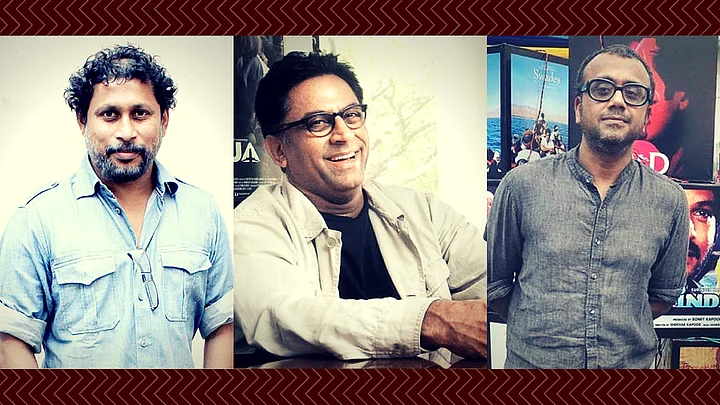In 1984, Ridley Scott, the director of the cult movie Blade Runner, was approached by Apple’s ad agency Chiat Day to make a television commercial. “We want to take on the mighty IBM, reposition them as clunky and outdated”. Steve Jobs, the client, had approved a 60 sec script idea, using George Orwell’s book 1984, to suggest that the real computer had arrived. The spot was to be aired during the Super Bowl. Known for his extravagance, Scott built a huge set, cast 100 skinheads and made history, spending $900,000. The TVC ran just twice, successfully de-stabilising ‘The Big Brother’. Ridley Scott was asked, how he approached TV ads, considering he flip- flopped between the ‘sixty second’ format and spectacular cinemascope.
“I see every TV commercial as a mini feature film”, he said simply.
As an ad guy, I have often danced on the edges of making a feature film, but always stopped short. Perhaps the sheer magnitude of the task ahead has been too daunting. An entry into Bollywood needs passion, astonishing patience, pots of money, an open minded producer, and a Pied Piper-esque ability to pull a bunch of experts along to realise your vision.
Some of my favourite Hindi films over the last few years - Vicky Donor, Piku, Cheeni Kum, Lucky Oye Oye Lucky, Khosla ka Ghosla, Airlift and Neerja, share one thing. They’ve all been made by advertising men.
Shoojit Sircar, R Balki, Dibakar Banerjee, Raja Menon and Ram Madhvani have all either dabbled, directed or are still knee deep in advertising and ad film making, between writing their screenplays and shooting their stories.
Shoojit Sircar, made ads till he finally put the finances together to make his first feature. But it was the later Vicky Donor that placed him on the Bollywood map. And the Deepika/Bachchan starrer Piku confirmed it. What stands out, for cinema-goers, is the uniqueness of his stories and the fullness of his characters.
Perhaps what got me noticed was the rawness of a Dettol ad I did in the 90s. It was football related. But the styling and the way I shot it was very un-ad like. The characters were real.Shoojit Sircar, Filmmaker
Raja Menon, director of the epic Airlift is very clear in his demarcation between the relative skills required for the two formats.
You have to pretty much forget the ad director in you when making a feature film. TV commercials are really about style, they have to look good, finally you are selling a brand. The emotional journey of the actor is vital in a motion picture. Even if a film doesn’t look good, people will watch if the story is engaging. You have to leave the ‘baggage’ of an ad behind. And focus on the scale of the big screen.Raja Krishna Menon, Filmmaker
Ram Madhvani, undoubtedly one of India’s top advertising directors, saw a very distinct similarity on how he approaches the two media.
Whether it’s his recent hit Neerja or the award winning Happydent advert, it is still essential to answer three vital questions, he says categorically –
What do you want to say, how do you want to say it and what do you want the audience to feel after seeing your film – the audience in the case of an ad would be the client sitting around the boardroom, for a feature the audience would be the masses as they emerge from the movie theatre.Ram Madhvani, Filmmaker
Dibakar Banerjee, straddles all kinds of cinema. It was his debut in the 2006 film Khosla Ka Ghosla that gave him cult status.
In many ways my ad film experience, helped us greatly us in Khosla ka Ghosla. There are so many variables whilst making an ad film – budget, time constraints (saying what you need to in matter of seconds), the brand itself. But what must never be compromised is the look – not necessarily, rich or luscious. But the specific look planned. And never veer from it.Dibakar Banerjee, Filmmaker
One thing is clear with all five of these men – their Bollywood feature films have a cosmetically crafted feel about them that has come from their years of advertising filmmaking. The detailing is spot on. Which brings us to the issue of product placement in cinema. Clever marketers realising the huge potential of this. Badly done it looks like an obvious addition for commercial purposes. Subtly done, like where Shoojit Sircar places a Tetrapack of milk, in a Piku breakfast scene, is pretty seamless.
Dibakar’s final comment to me sums up the whole issue of the medium in all its avatars,
Today’s filmmakers, whether brand or Bollywood, need to keep in mind, that their films will both be seen on a large Plasma TV as well as a small phone handset. How do you get a wide angle on an Iphone?Dibakar Banerjee
(Rahul DaCunha balances his life between advertising, theatre and his two cats. He’s on Twitter @RahuldaCunha)
(At The Quint, we question everything. Play an active role in shaping our journalism by becoming a member today.)
